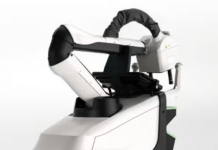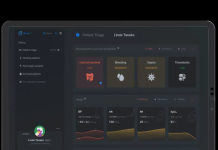EndoTheia completed the first-in-human clinical trial for its FlexStone basket, a steerable kidney stone treatment. Nashville, Tennessee-based EndoTheia said its FlexStone basket represents the first-ever independently steerable kidney stone basket. It enables precision and control in kidney stone removal by letting surgeons directly steer the device. This delivers effective maneuvering around anatomical structures to reach stones in difficult-to-access locations within the kidney.
According to the company, it addresses the longstanding limitations of conventional kidney stone retrieval devices. FlexStone could potentially improve patient outcomes and reducing procedural complexity.
Related: Second Heart Assist’s Whisper device has successful case studies
Dr. Nicholas Kavoussi and Dr. Ryan Hsi, who served as co-lead investigators, conducted the clinical trial at Vanderbilt University Medical Center. Hsi says the device could transform how they approach kidney stone cases.
“The FlexStone Basket offers unprecedented flexibility and control, enabling us to access and retrieve stones in challenging locations that would otherwise be difficult to reach,” said Kavoussi. “It’s a game-changer that brings a new level of precision to kidney stone removal procedures.”
Moving forward, EndoTheia also entered into a strategic partnership with Nissha Medical Technologies to support the commercial scale-up of the FlexStone basket and advance innovations in minimally invasive endoscopy. The collaboration helps EndoTheia accelerate its innovation pipeline, the company said. EndoTheia also has an independently steerable laser fiber to speed up stone removal under development.
“The successful first-in-human trial of the FlexStone basket is a testament to EndoTheia’s commitment to pioneering transformative medical devices that empower physicians and improve patient care,” said EndoTheia President Robert Webster, III. “We are thrilled to be working with leading experts at Vanderbilt University on this groundbreaking achievement and look forward to bringing this technology to healthcare providers worldwide.”






